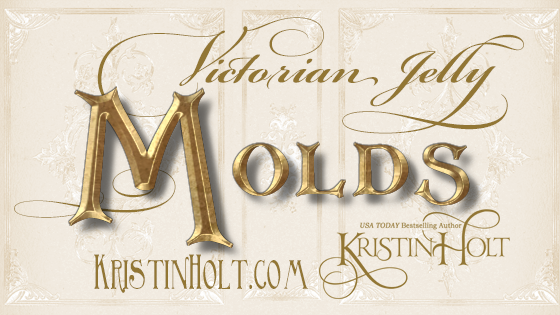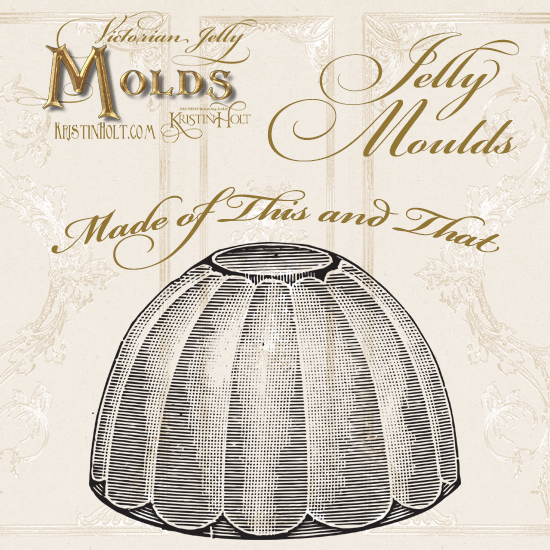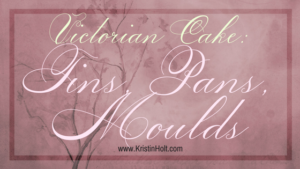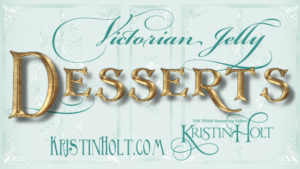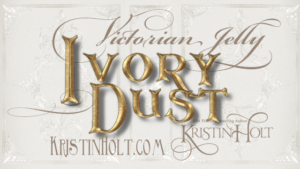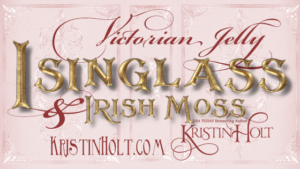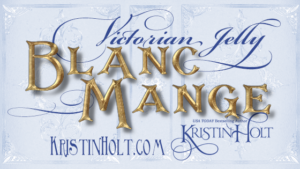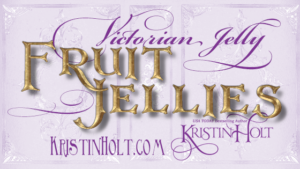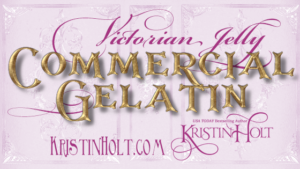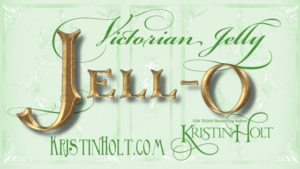Victorian Jelly: Molds
Victorian Jelly: Molds
.
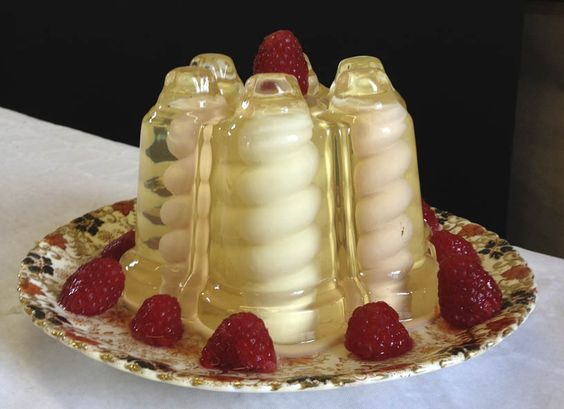
Molded Jelly presentation. Image: Pinterest.
.
Nineteenth-century folks adored jellied dishes. Picture fancy molded (moulded) Jell-O, Victorian-style.
.
To set a fancy gelatinous mass of goodness, Victorian cooks used molds. These dishes were made of a few different types of materials and adhered to fashions of the day.
.
So is it MOLD or MOULD? Which is correct? According to contemporary sources, British English has no “mold” and American English has no “mould.”the
.
I’ll use the two interchangeably as American publications from the nineteenth century didn’t know about this differentiation. Note this first example from the Boston Cooking School Cook Book of 1896 where instructions include: “Place a mould in pan of ice water…”
.
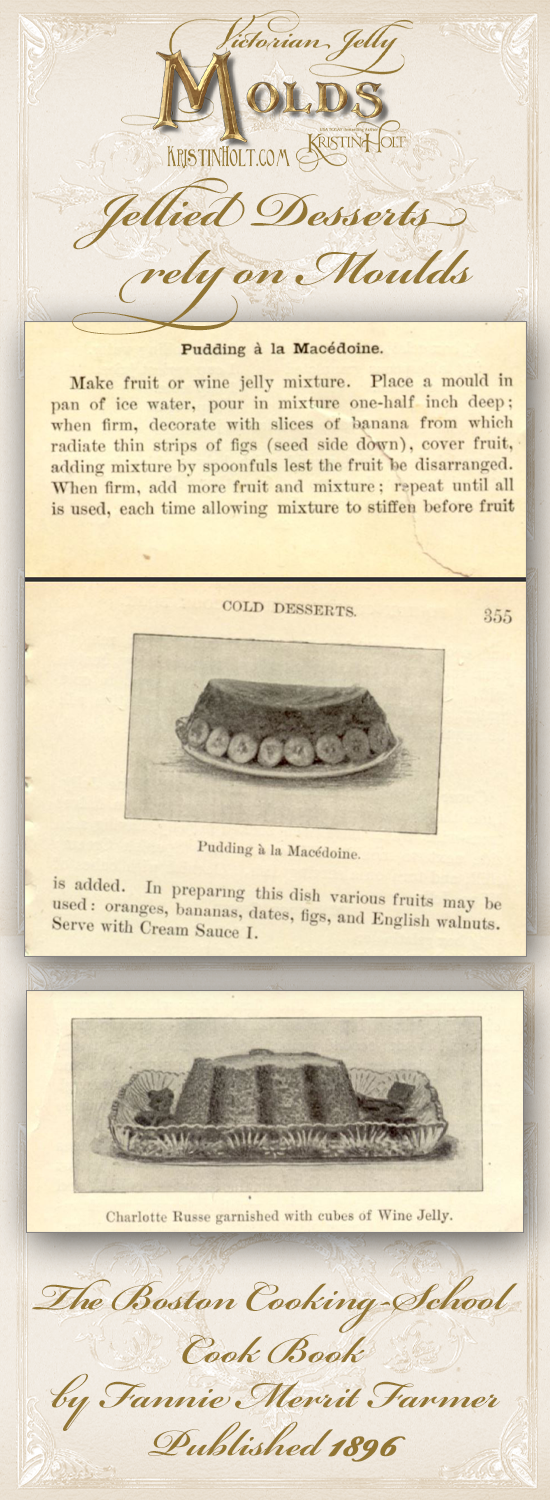
Jellied Desserts rely on Moulds. Pudding a la Macedoine and Charlotte Russe pictured within The Boston Cooking-School Cook Book by Fannie Merrit Farmer, Published 1896.
.
Jelly Molds: A Housekeeping Necessity
.
The sheer quantity and frequency of jellied desserts in 19th century cook books, newspapers, advertisements, and society pages illustrate their popularity. In order to keep a fashionable house, those homemakers and cooks simply needed jelly strainers and jelly moulds. Yes, this Baltimore, Maryland advertisement of 1841 uses the British spelling as well.
.
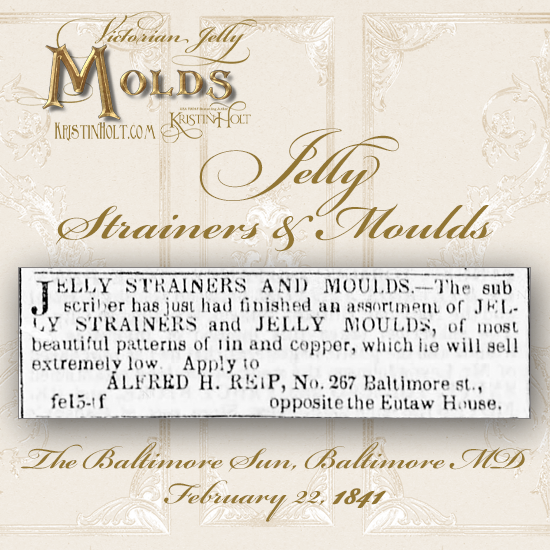
Jelly Strainers and Moulds of tin and copper for sale. Advertised in The Baltimore Sun of Baltimore, Maryland. February 22, 1841.
.
This 1842 advertisement of household wares includes moulds for Jelly, Blanc Mange, and Charlotte de Russe.
.
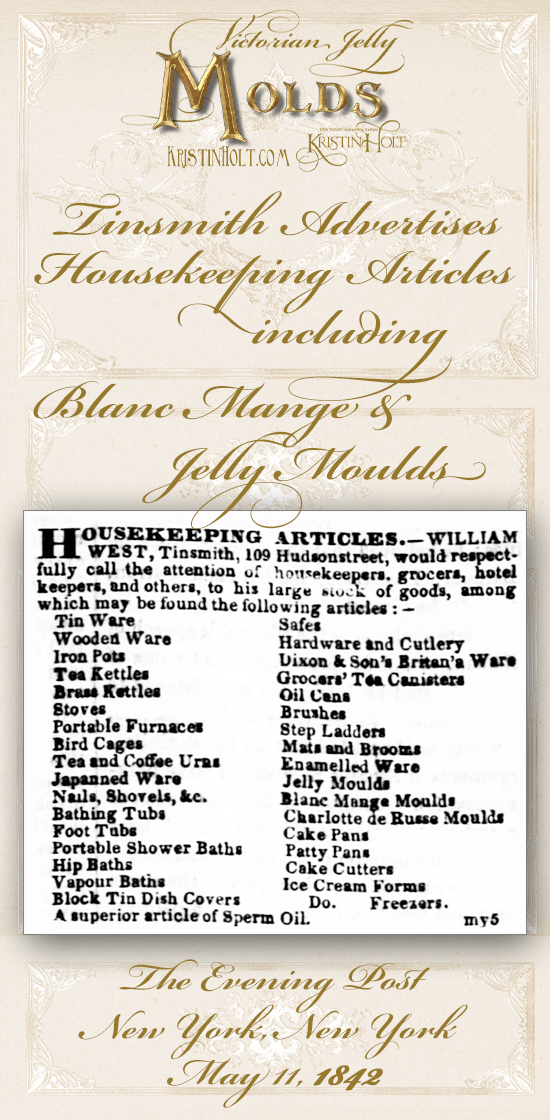
Tinsmith advertises housekeeping articles including blanc mange and jelly moulds. The Evening Post of New York, New York, May 11, 1842.
.
One might suspect that fancy doodads fashioned by tinsmiths would be readily available in New York City but rare in the country. And perhaps such niceties were less common. Yet newspaper advertisements indicate jelly moulds were found in country stores.
.
Jelly Moulds Available In the Country
.
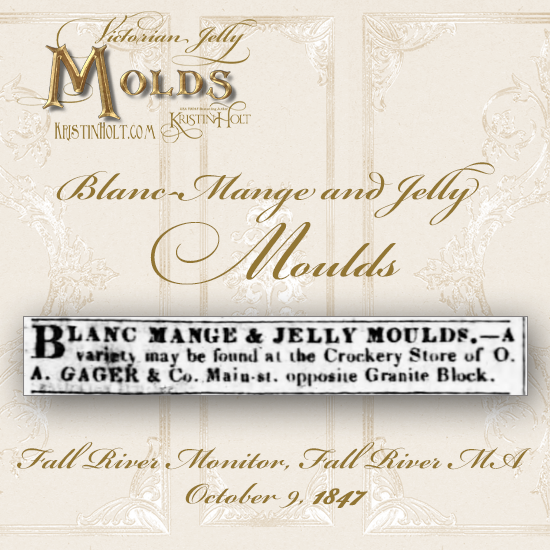
Blanc-Mange and Jelly Moulds found at the Crockery Store of O. A. Gager & Co. Published in Fall River Monitor of Fall River, Massachusetts. October 8, 1847.
.
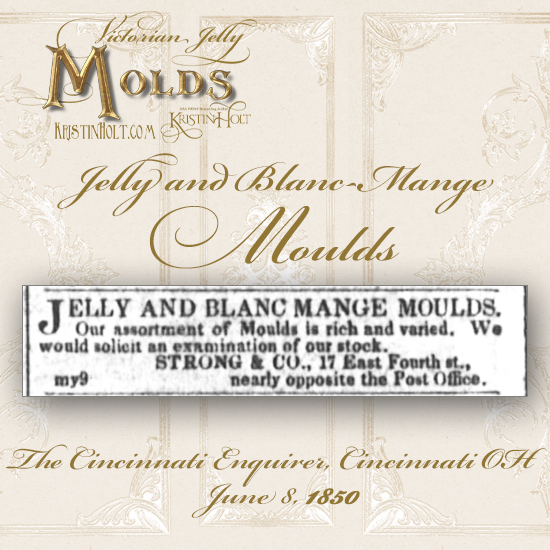
Jelly and Blanc Mage Moulds. Advertised in The Cincinnati Enquirer of Cincinnati, Ohio. June 8, 1850.
.
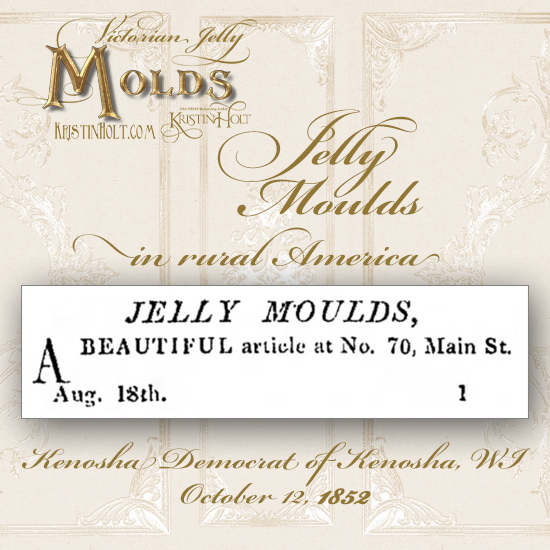
Jelly Moulds for sale in Kenosha, Wisconsin. Advertised in Kenosha Democrat, October 12, 1852.
.
The previous newspaper ads, dated 1852 and earlier, show the popularity of jelly moulds in mid-nineteenth century America. With the advent of mail-order catalogs, all types of fancy articles sold nationwide and shipped by rail.
.
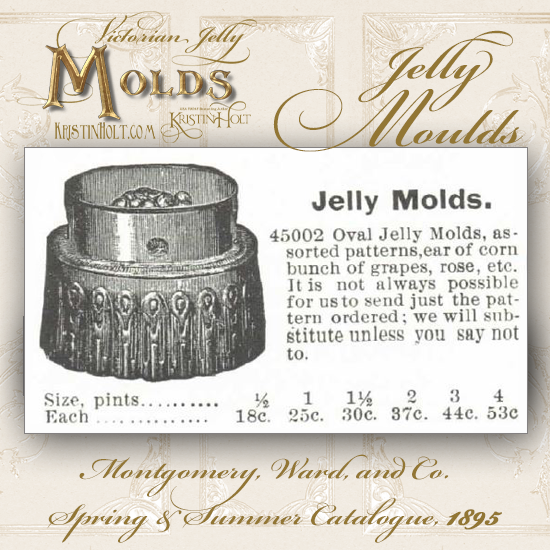
Jelly Molds for sale in Montgomery, Ward & Co. Spring and Summer Catalogue of 1895.
.
Victorian Jelly Molds: Made of This and That
.
In the advertisements, above, we see tin and copper jelly moulds. Other molds were sold by a crockery store, suggesting ceramic. Below, see examples of 19th century jelly moulds made of these materials and more.
.
.
Examples of Vintage Molds
.
Salt Glaze Ceramic Molds, Circa 1865
.
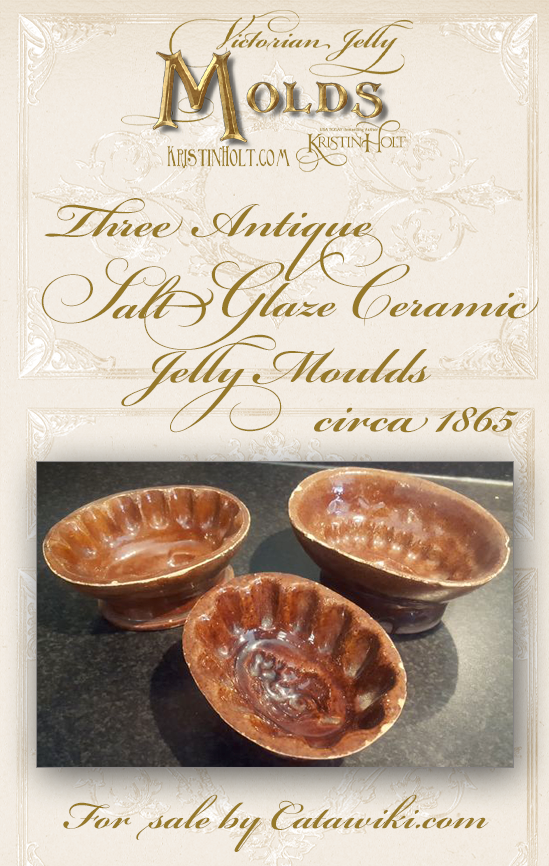
Three Salt Ceramic Antique Jelly Moulds, circa 1865. For sale by Catawiki.com.
.
Ironstone Creamware Mold, 1800s
.
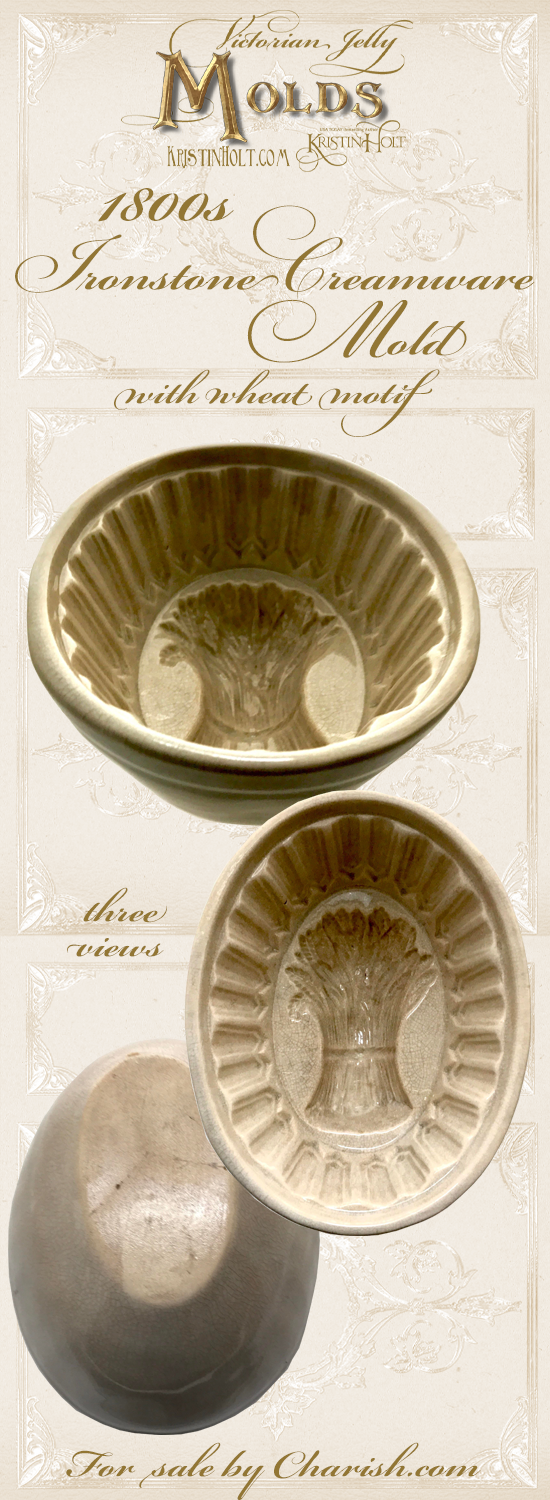
Ironstone Creamware Mold. For sale by Charish.com.
.
Copper Aspic Moulds, 19th century English
.
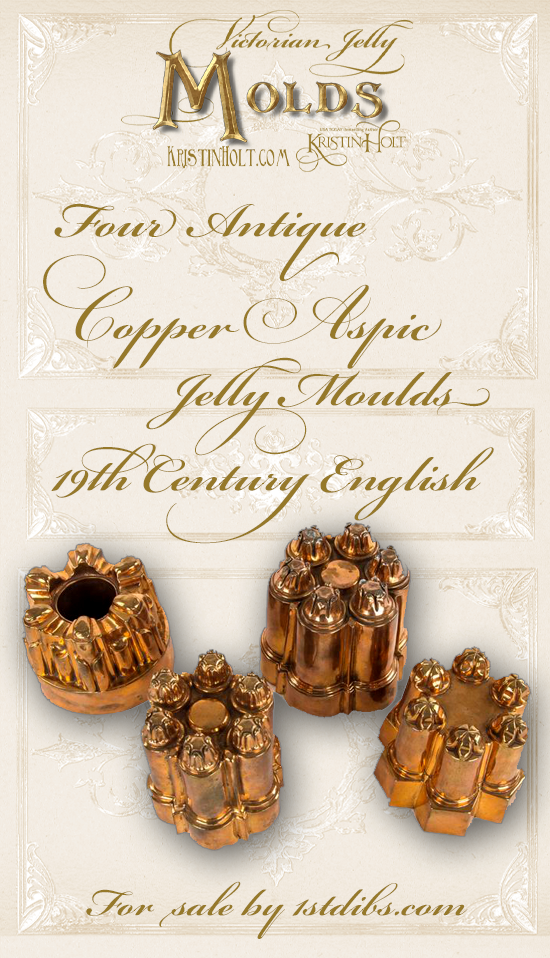
Four Antique Copper Aspic Jelly Moulds, 19th Century English. For sale by 1stdibs.com.
.
Zinc and Tin Mold, 19th century
.
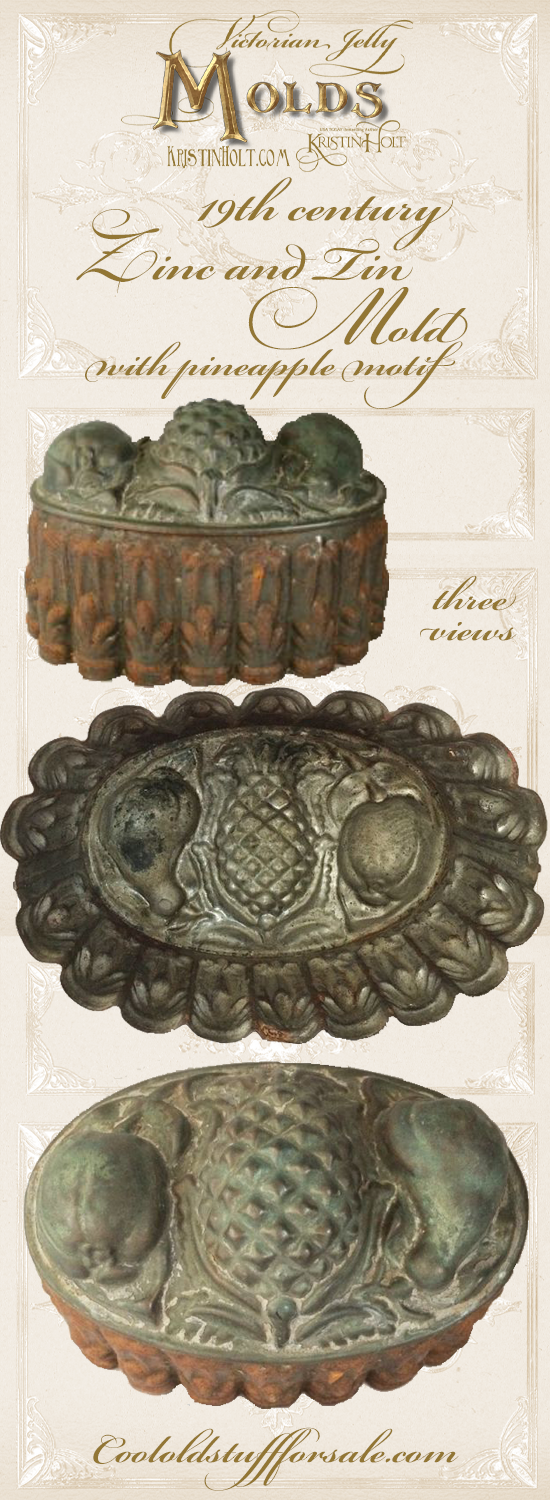
Three views of a 19th century zinc and tin mold with pineapple motif. Sold by CoolOldStuffForSale.com.
.
Related Articles
.
.
The blog series is complete
.

Victorian Jelly: Blog Post Series
.
Updated July 2022
Copyright © 2021 Kristin Holt LC
Victorian Jelly: Molds

